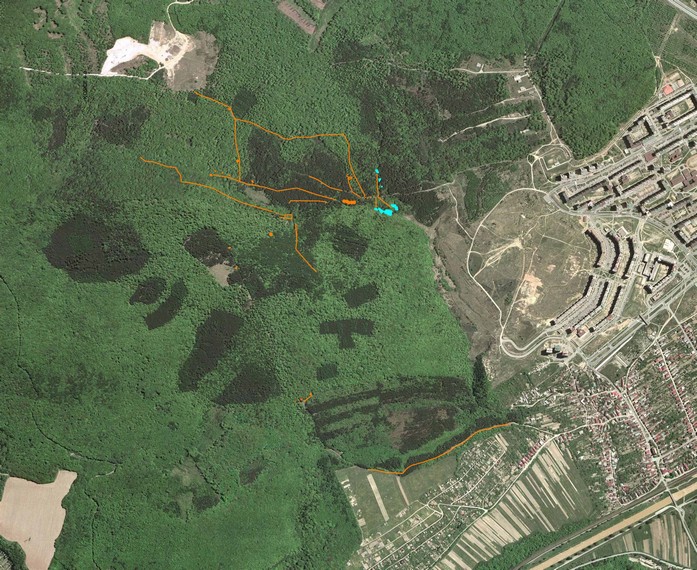|
Compressed soil on the logging tracks that are no longer used and in the furrows created by heavy machines should be dug by excavators, starting from the top of the slope, stopping water flowing on them in order to retain the rainwater in the place where it fell allowing it to soak naturally into this dug earth.
These measures are immediately effective, sustainable and much more important for the nature and mankind than the erection of dams and polders. And the costs are minimal. Inconceivably dense networks of unused logging tracks and compressed surfaces left after the operation of heavy machinery in forest areas can be found all over Europe. These must be destroyed by digging in order to retain the rainwater immediately in the place where it fell, allowing it to soak gradually into the soil. Implementation of this measure will:Increase the water retention capacity of soil during rains, thus preventing floods and subsequent droughts to a major extent;
MEASUREMENTS CONDUCTED BY SLOVAK ACADEMY OF SCIENCES (SAV)Slovak Academy of Sciences gauged the effectiveness of the water retention capacity of the forests in Ťahanovce. It was crucial to perform comparative measurements on compacted vs roads treated by soil agitation and forests by an independent scientific institution and. The experiment was conducted on an eroded road formerly used for timber transport. The scientists simulated rainfall with the intensity of 100 mm/m2. The compacted road hardly absorbed any water. The road treated by ground agitation, as measurements attest, contrived to retain 100% of water. Outcomes of the measurements carried out by the Slovak Academy of SciencesDestroying of unused logging tracks by digging and its influence on surface water runoff“Efficiency rate of this measure in the given conditions was 100%”The part of the road which had been destroyed by digging was able to absorb the entire volume of the simulated rain (100 mm in 3 hours). As a result, no new surface runoff appeared. Subsurface runoff collected in the bottom gutter located 52 cm under the road surface represented 3.8 % of the overall volume of simulated rain. The subsurface runoff was observed as soon as approximately 1 hour after the commencement of the artificial rain and it lasted for some 7 hours (i.e. from 3:08 pm to 10:20 pm). Average volume of water retained in the pores of the soil forming the surface of the road for a longer time was 16 %. Most of the artificial rainwater (almost 80%) thus managed to soak into the lower layers of the road basement through incompact soil. Influence of the undestroyed logging tracks on surface water runoffThe experiment has proven that the undestroyed logging tracks play a major role in the forming of surface water runoff. Most of the rainwater (here 81% of the simulated rainwater volume, Fig. 1) that falls on the ground does not soak into the ground but flows away along the surface. |
||
 |
 |
 |
 |
 |
 |
 |
 |
 |
|
Water retained in the “holes” soaks gradually into the ground, feeding groundwater resources. |
In the spring, soon after the destroying of the roads, plants are coming back to life :) |
The compressed forest road “disappeared” a year after it has been destroyed. |
|
REPEJOV – GPS mapping of the destroyed compressed surfaces/forest roads – orange colour |
OĽKA - GPS locating of the destroyed compressed surfaces/forest roads |
AHANOVCE - GPS locating of the destroyed compressed surfaces/forest roads |









